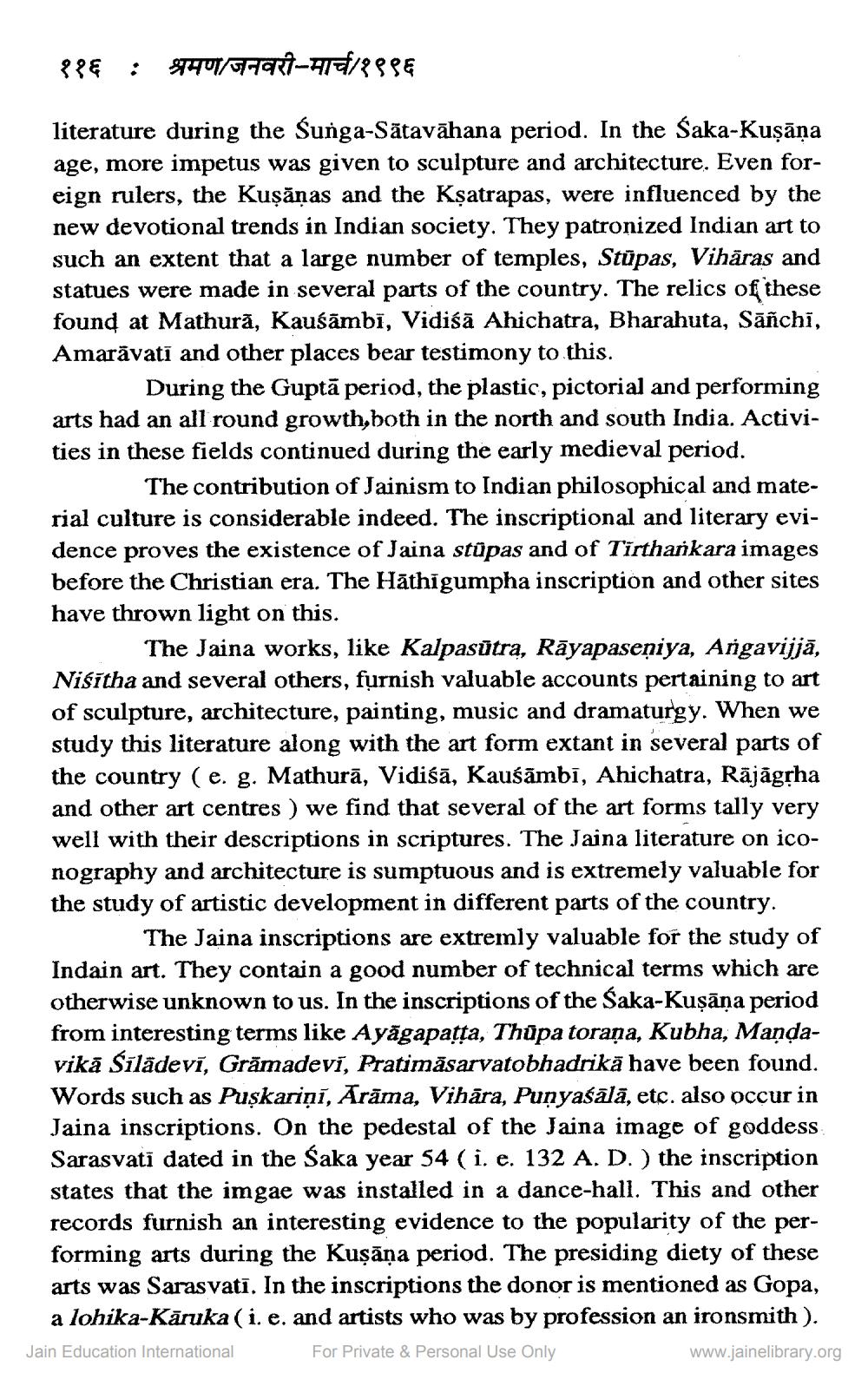________________
११६ : श्रमण/जनवरी-मार्च/१९९६
literature during the Sunga-Sātavāhana period. In the Saka-Kuşāņa age, more impetus was given to sculpture and architecture. Even foreign rulers, the Kuşăņas and the Ksatrapas, were influenced by the new devotional trends in Indian society. They patronized Indian art to such an extent that a large number of temples, Stūpas, Vihāras and statues were made in several parts of the country. The relics of these found at Mathurā, Kaušāmbi, Vidiśā Ahichatra, Bharahuta, Sāñchi, Amarāvati and other places bear testimony to this.
During the Guptā period, the plastic, pictorial and performing arts had an all round growth, both in the north and south India. Activities in these fields continued during the early medieval period.
The contribution of Jainism to Indian philosophical and material culture is considerable indeed. The inscriptional and literary evidence proves the existence of Jaina stupas and of Tirtharikara images before the Christian era. The Hāthigumpha inscription and other sites have thrown light on this.
The Jaina works, like Kalpasūtra, Rāyapaseniya, Argavijjā, Niśitha and several others, furnish valuable accounts pertaining to art of sculpture, architecture, painting, music and dramaturgy. When we study this literature along with the art form extant in several parts of the country (e. g. Mathurā, Vidiśā, Kaušāmbi, Ahichatra, Rājāgrha and other art centres ) we find that several of the art forms tally very well with their descriptions in scriptures. The Jaina literature on iconography and architecture is sumptuous and is extremely valuable for the study of artistic development in different parts of the country.
The Jaina inscriptions are extremly valuable for the study of Indain art. They contain a good number of technical terms which are otherwise unknown to us. In the inscriptions of the Saka-Kuşāna period from interesting terms like Ayāgapatta, Thüpa torana, Kubha, Mandavikā Sīlädevī, Grāmadevi, Pratimăsarvatobhadrikā have been found. Words such as Puşkariņi, Arāma, Vihāra, Punyaśālā, etc. also occur in Jaina inscriptions. On the pedestal of the Jaina image of goddess Sarasvati dated in the Saka year 54 (i. e. 132 A. D.) the inscription states that the imgae was installed in a dance-hall. This and other records furnish an interesting evidence to the popularity of the performing arts during the Kuşāņa period. The presiding diety of these arts was Sarasvati. In the inscriptions the donor is mentioned as Gopa,
a lohika-Kāruka ( i.e. and artists who was by profession an ironsmith). Jain Education International For Private & Personal Use Only
www.jainelibrary.org




